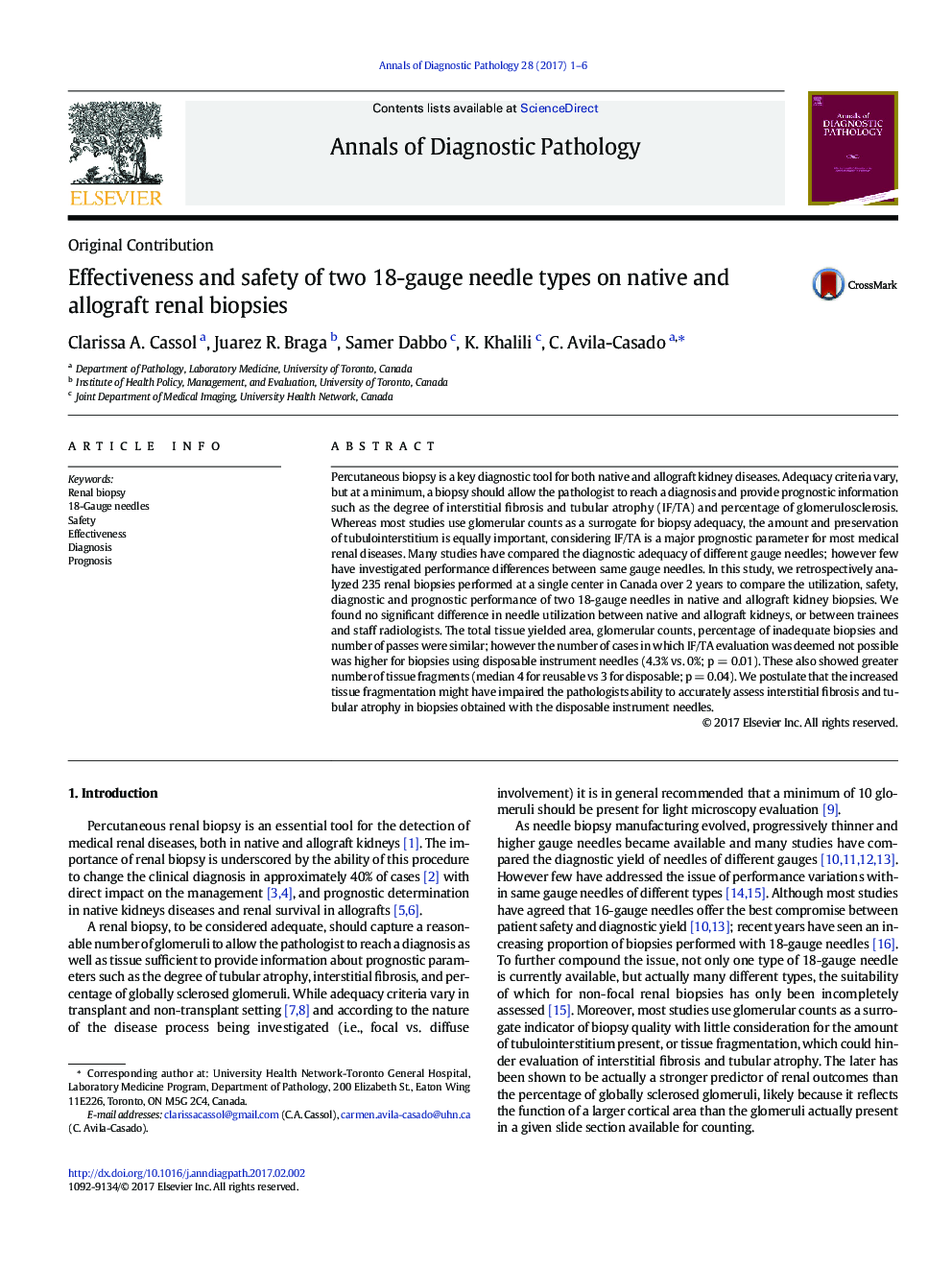| Article ID | Journal | Published Year | Pages | File Type |
|---|---|---|---|---|
| 5715921 | Annals of Diagnostic Pathology | 2017 | 6 Pages |
â¢We compared utilization, safety, diagnostic and prognostic performance of two 18-gauge needles in 235 native and allograft kidney biopsiesâ¢There was no preference in utilization between trainees versus staff radiologists nor between transplant versus native kidney settingâ¢Diagnostic performance was similar however cases inadequate for interstitial fibrosis evaluation was higher for disposable biopsiesâ¢Biopsies obtained with disposable instrument and needle also showed greater number of tissue fragmentsâ¢We postulate that increased fragmentation impaired pathologists ability to assess interstitial fibrosis in disposable instrument biopsies
Percutaneous biopsy is a key diagnostic tool for both native and allograft kidney diseases. Adequacy criteria vary, but at a minimum, a biopsy should allow the pathologist to reach a diagnosis and provide prognostic information such as the degree of interstitial fibrosis and tubular atrophy (IF/TA) and percentage of glomerulosclerosis. Whereas most studies use glomerular counts as a surrogate for biopsy adequacy, the amount and preservation of tubulointerstitium is equally important, considering IF/TA is a major prognostic parameter for most medical renal diseases. Many studies have compared the diagnostic adequacy of different gauge needles; however few have investigated performance differences between same gauge needles. In this study, we retrospectively analyzed 235 renal biopsies performed at a single center in Canada over 2 years to compare the utilization, safety, diagnostic and prognostic performance of two 18-gauge needles in native and allograft kidney biopsies. We found no significant difference in needle utilization between native and allograft kidneys, or between trainees and staff radiologists. The total tissue yielded area, glomerular counts, percentage of inadequate biopsies and number of passes were similar; however the number of cases in which IF/TA evaluation was deemed not possible was higher for biopsies using disposable instrument needles (4.3% vs. 0%; p = 0.01). These also showed greater number of tissue fragments (median 4 for reusable vs 3 for disposable; p = 0.04). We postulate that the increased tissue fragmentation might have impaired the pathologists ability to accurately assess interstitial fibrosis and tubular atrophy in biopsies obtained with the disposable instrument needles.
